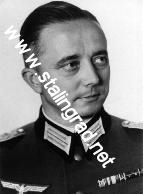
End November early December 1942 Johannes Schmidt became sick. He was not able to walk anymore and was brought to the divisional doctor, Oberstarzt Dr. Karl Uhrmacher (missing in Stalingrad since end January 1943). Schmidt suffered a life threating jaundice. Dr. Karl Uhrmacher and the 6. Army Doctor Generalstabarzt Dr. Otto Renoldi adviced that it was the best to fly him out of the Stalingrad “pocket” to recover from his disease.
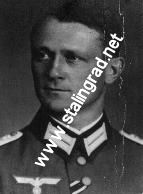
Eberhard Thunert received orders to fly out of the Stalingrad pocket and he left on the evening of 13 January 1943. He took with him XIV. Panzerkorps’ war diary and its annexes. He had been ordered to fly out by Heeresgruppe Don to solve several supply problems. The German high command ordered him not to fly back into ‘Fortress’ Stalingrad. On the same plane as him was the 01 of 6. Armee, Hauptmann Winrich Behr, who took the 6. Armee war diary and its annexes. Behr had an important task once he was free of the confines of the Kessel: he was ordered to report to Hitler’s headquarters to personally explain to Hitler the situation of the encircled German 6. Armee. Behr’s instructions were to ask Hitler for permission for Paulus to have ‘Handlungsfreiheit’ (freedom of action). Hitler did not consent to this request.
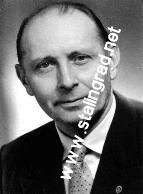
Now that the end in Stalingrad was approaching, each division was ordered to fly out their best and most experienced officers. The division commander, Generalleutnant Richard Stempel, agreed with this order and the senior army doctor, Generalstabarzt Otto Renoldi, also gave his permission because Mäder was no longer in a fit state to fight. He went back to his unit and said goodbye to the remnants of Grenadier-Regiment 522 and in the evening of 22 January 1943 Hellmuth Mäder flew out of the Stalingrad pocket with nine other soldiers in a Heinkel 111 from Stalingradski airfield, the last available airport for the Germans in the encirclement. This small airport, measuring only 400 x
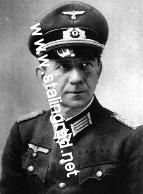
In the night of 18 January
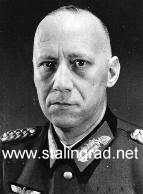
Wilhelm Arnold flew out of the Stalingrad encirclement from Pitomnik airfield on New Years Day 1943
(1 January 1943). This had been ordered by Friedrich Paulus and Arnold had therefore received written permission from Arthur Schmidt, Paulus’ chief of staff. Friedrich Paulus knew about the good friendship between Wilhelm Arnold and Hitler’s first adjudant, General Rudolf Schmundt, and Paulus hoped that Wilhelm Arnold, through Schmundt, could explain the bad sitiuation of 6. Armee. Paulus was hoping to receive an order from Hitler to break out or to surrender.
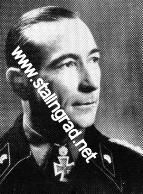
In the morning of 19 Janaury 1943 Willy Langkeit received the orders from the 14. Panzer Division and from A.O.K. 6 to fly out of the Stalingrad encirclement. Each division was ordered to fly out their best and most experienced officers. Before he left the trapped German forces he went to his comrades and bade them farewell. Willy Langkeit was air evacuated from Stalingrad in the evening of 19 Janaury 1943. He flew out of the Stalingrad encirclement with a Heinkel 111 from Gumrak airport. The same day Generaloberst Hans Hube was also air evacuated from Stalingrad.